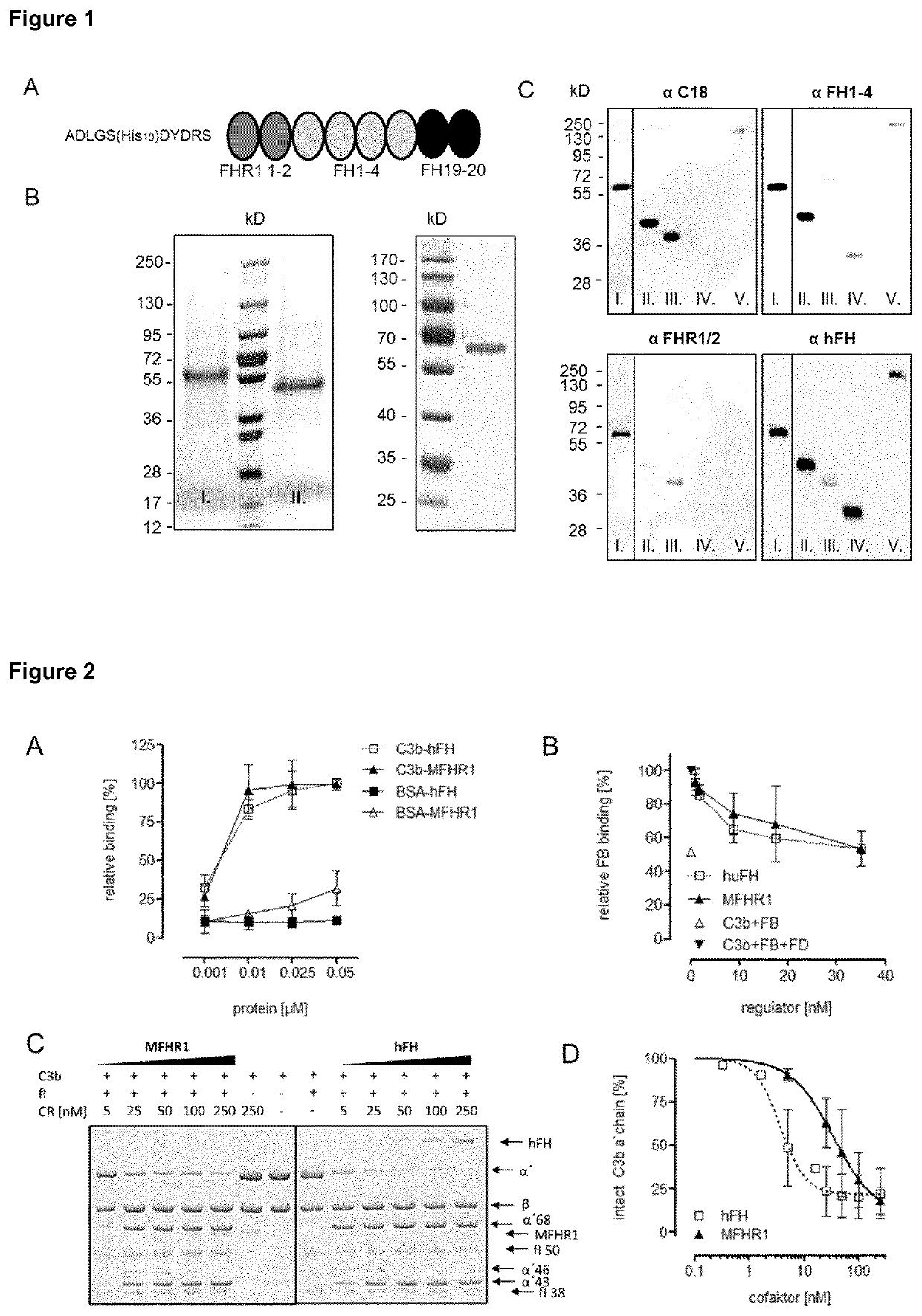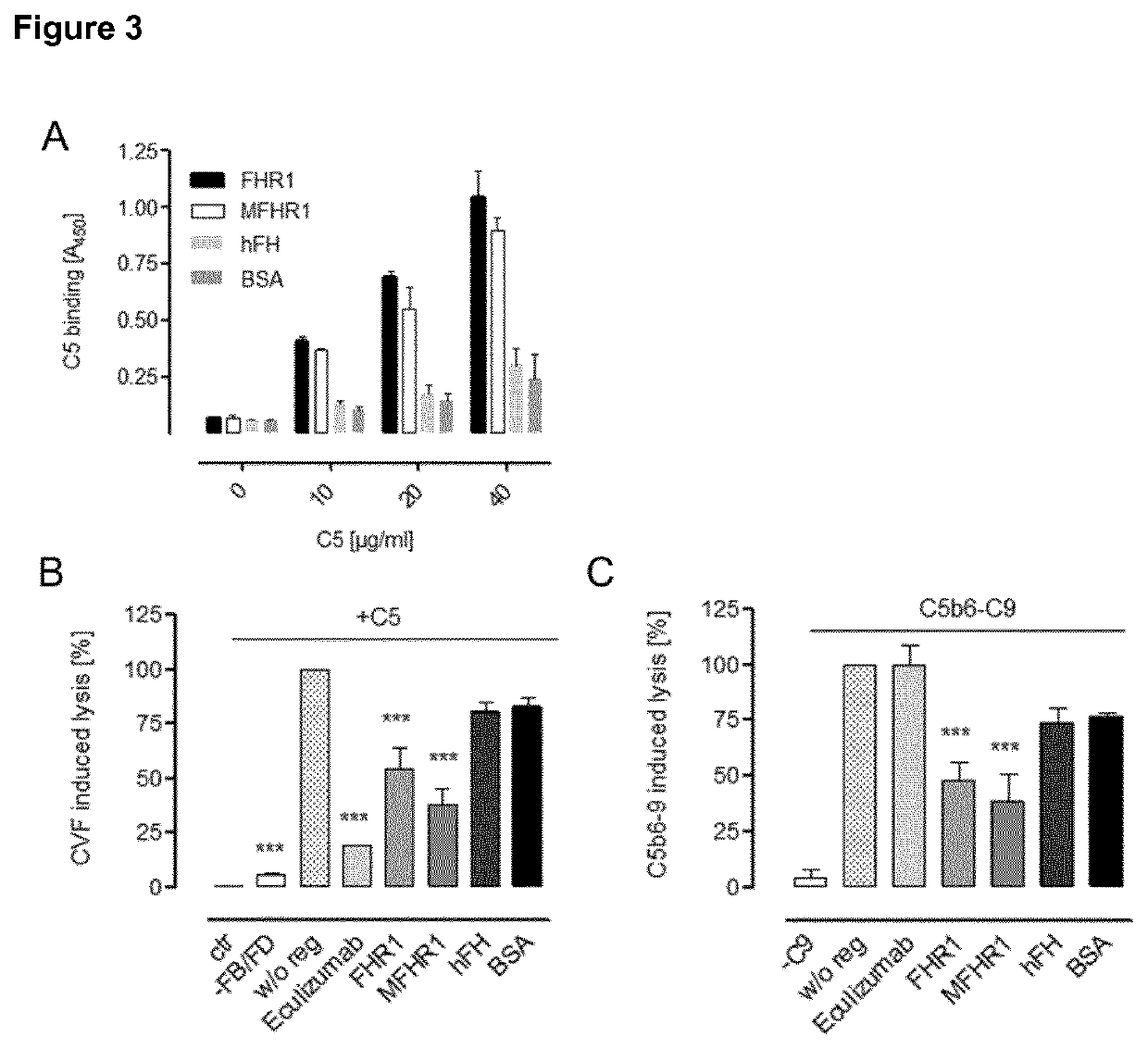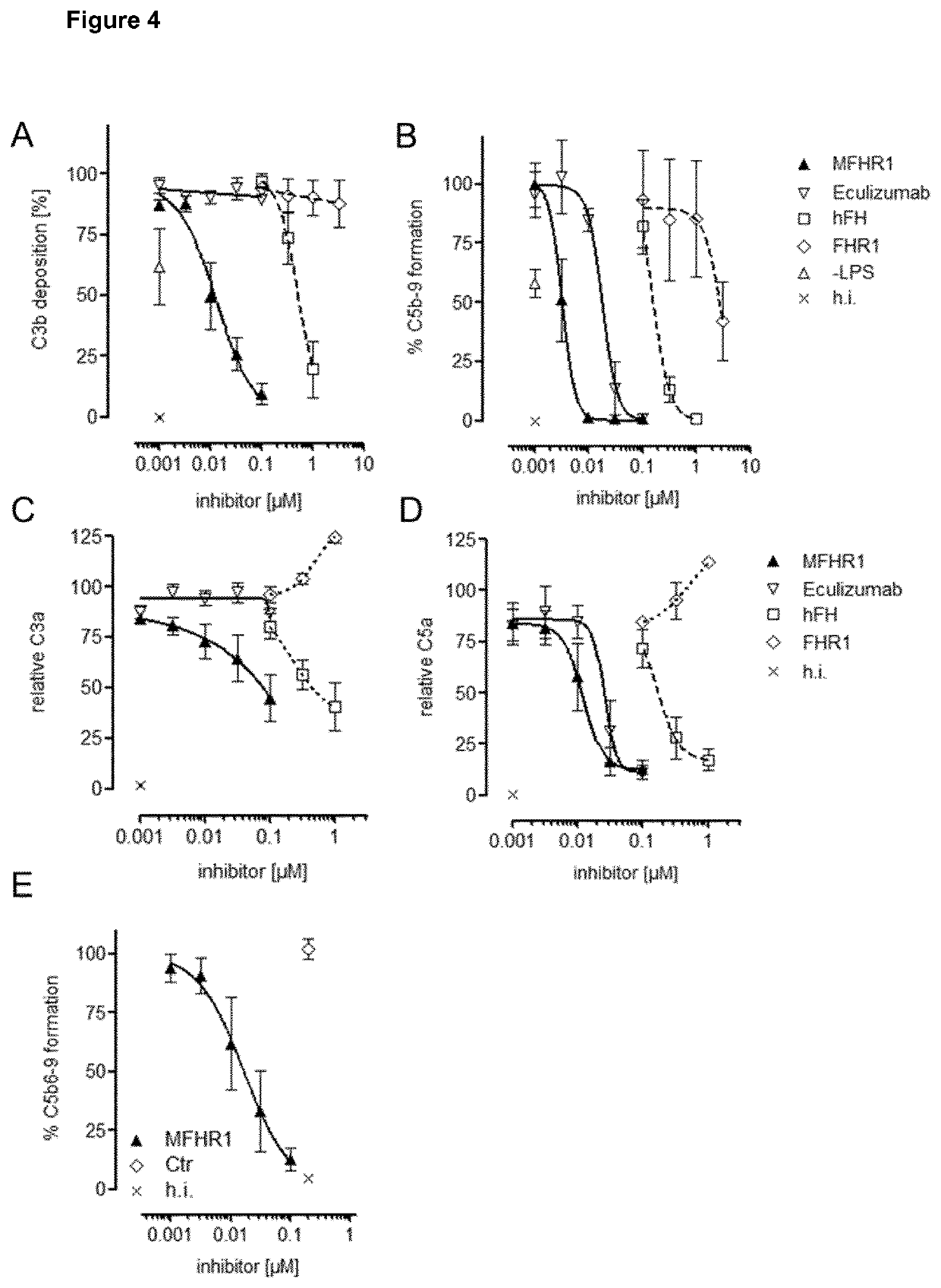Polypeptides for inhibiting complement activation
a technology of complement activation and polypeptides, which is applied in the field of polypeptides for inhibiting complement activation, can solve the problems of ahus or c3g death or terminal failure in more than 60% of patients, limited established treatment options for ahus or c3g, and high risk of underlying disease recurrence, so as to achieve effective blocking of complement activation, effective regulation of ap (and cp) activity, and fine tuning
- Summary
- Abstract
- Description
- Claims
- Application Information
AI Technical Summary
Benefits of technology
Problems solved by technology
Method used
Image
Examples
examples
[0084]MFHR1 consists of the N-terminal FH regulatory active domains SCR1-4 (C3 / C5 convertase decay accelerating- and cofactor activity) with C-terminal surface recognition domains (SCR19-20) of FH in combination with the N-terminal domains of FHR1 (SCR1-2) [FIG. 1]. FHR1 is the only known endogenous complement regulator of the C5 convertase. FHR1 SCR1-2 binds to C5 and thereby inhibits C5 cleavage into C5a and C5b. Additionally, FHR1 SCR1-2 inhibits the terminal complement pathway by binding to C5b6. Through the combination of these domains the complement activation is inhibited at multiple effector sites of the cascade (C3b degradation, inhibition of C3 / C5-convertases, inhibition of C5 cleavage and C5b-9 formation). This also leads to the suppression and formation of the anaphylatoxins C3a and C5a, which are thought to contribute in disease progression in AP related diseases.
[0085]To produce MFHR1, cDNA fragments containing the requested sequence of the FH and FHR1 domains mentione...
PUM
| Property | Measurement | Unit |
|---|---|---|
| concentrations | aaaaa | aaaaa |
| molecular weight | aaaaa | aaaaa |
| concentration | aaaaa | aaaaa |
Abstract
Description
Claims
Application Information
 Login to View More
Login to View More - R&D
- Intellectual Property
- Life Sciences
- Materials
- Tech Scout
- Unparalleled Data Quality
- Higher Quality Content
- 60% Fewer Hallucinations
Browse by: Latest US Patents, China's latest patents, Technical Efficacy Thesaurus, Application Domain, Technology Topic, Popular Technical Reports.
© 2025 PatSnap. All rights reserved.Legal|Privacy policy|Modern Slavery Act Transparency Statement|Sitemap|About US| Contact US: help@patsnap.com



